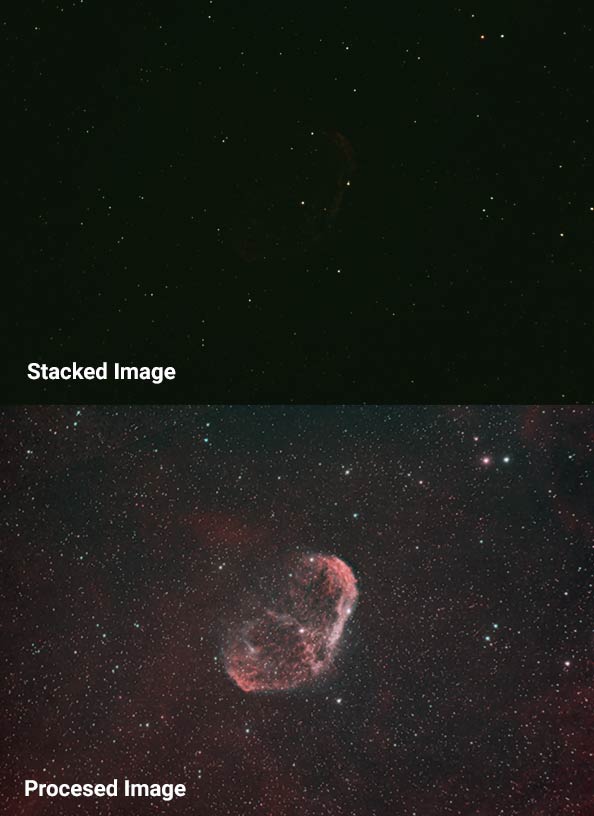

- #Best stacking software for astrophotography how to
- #Best stacking software for astrophotography full
- #Best stacking software for astrophotography professional
The following are some benefits of using focus stacking:

Essentially, using focus stacking, you can get an image with a stunning blurred background, whilst focusing clearly on individual objects too. The large aperture allows you to create a beautifully out-of-focus background or even a bokeh effect. Whilst smaller apertures are fantastic for landscape photography, larger apertures are more appropriate for shooting single objects. Shooting at a small aperture of f/22 may not provide the same level of detail or sharpness as a photo at f/4.0. '15 The FE 1635mm f/4 A7sĬameras and lenses are forever and software just gets better.So why would you use the best focus stacking software? Surely you could just form the above photo of the three plants using a smaller aperture of f/22, for example? This would achieve the same result, right? Technically yes, but we have to consider the fine details. In '14 I captured the MW not knowing it was there with the Canon T2i using the EF-S 10-22mm at 10mm (16mm) just pointing south But using a modern Lr, 2.
#Best stacking software for astrophotography full
I found the Sony APS-C FE 1018 f/4 if used in full frame to be 12-18mm (18 if the lightshield removed) was great and the FE 1635 f/4 had no trailing. Photographers went ultra wide and fast even using fisheyes til panos were done but still wide lenses used. The great Rokinon 14mm f/2.8 no program even had a lens profile for a year when even today Lr only has. Also lenses had a lot of different types of coma where pros had to clone out or crop out. Software sucked at noise causing the need to stack 10 or more images and early PS blending foreground and sky.

But software even PS/Lr were no good at noise even Capture One.
#Best stacking software for astrophotography how to
In '15 I discovered in a Magazine but found how to find and capture on PhotoPills and Lonelyspeck site after discovering the A7s I bought in '14 was the best to use.

Scoop one up and go capture the stars!Ī very important thing about Astro Milky Way back in '12 there was very little info on MW's (even on the net) and there was the 400,500,600 rules for star trailing. But if you are lucky enough to still have one or have $500 knocking about and want to get into landscape astrophotography, now may be the time. I had already purchased a 5D Mark III by the time the 6D was announced, so I am one of the many who completely disregarded this camera. And the astro modification service Alyn mentions in the video can be done for around $200. A cursory check of eBay finds dozens of 6Ds for sale under $500. And thirdly, the 6D is relatively cheap, both to buy secondhand and to modify. Second, the Canon EF range of lenses is vast, meaning photographers have a wide variety of superb optics to choose from. First, the sensor in the 6D is full frame, with a rather large pixel width of 6.55 µm, which helps its low-light performance.
#Best stacking software for astrophotography professional
So, what do these professional astrophotographers know that the rest of us don't? The secret can be broken down into three parts. Alyn brings up some important data from the Astronomy Photographer of the Year competition, which points out that the Canon 6D has been the most popular camera in the competition for at least the last three years, even beating out the most dedicated astronomy cameras! That's no small feat, considering the age of the camera and its competition. Originally released in November of 2012, the 6D was Canon's budget entry into full-frame DSLRs, coming in at $1,500 less than the 5D Mark III, which had been released eight months earlier. In this eye-opening video, astrophotographer Alyn Wallace proposes that the best budget camera for landscape astrophotography is a 10-year-old relic, the Canon 6D. In doing so, we may have relegated some cameras to the trash-heap far too soon. With landscape astrophotography in particular, it’s easy to covet the new cameras on the horizon, in the hopes that they will be more sensitive, better performing under low-light conditions, and have higher resolutions. But what if there's a better camera out there that most of us have forgotten about? With all the fanfare this past year over the latest developments in camera technology, it's easy to get caught up in gear envy.


 0 kommentar(er)
0 kommentar(er)
